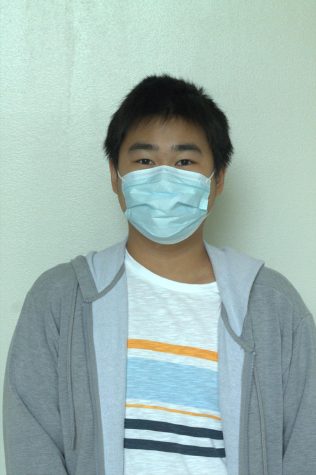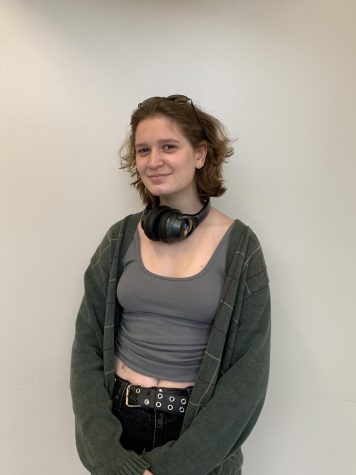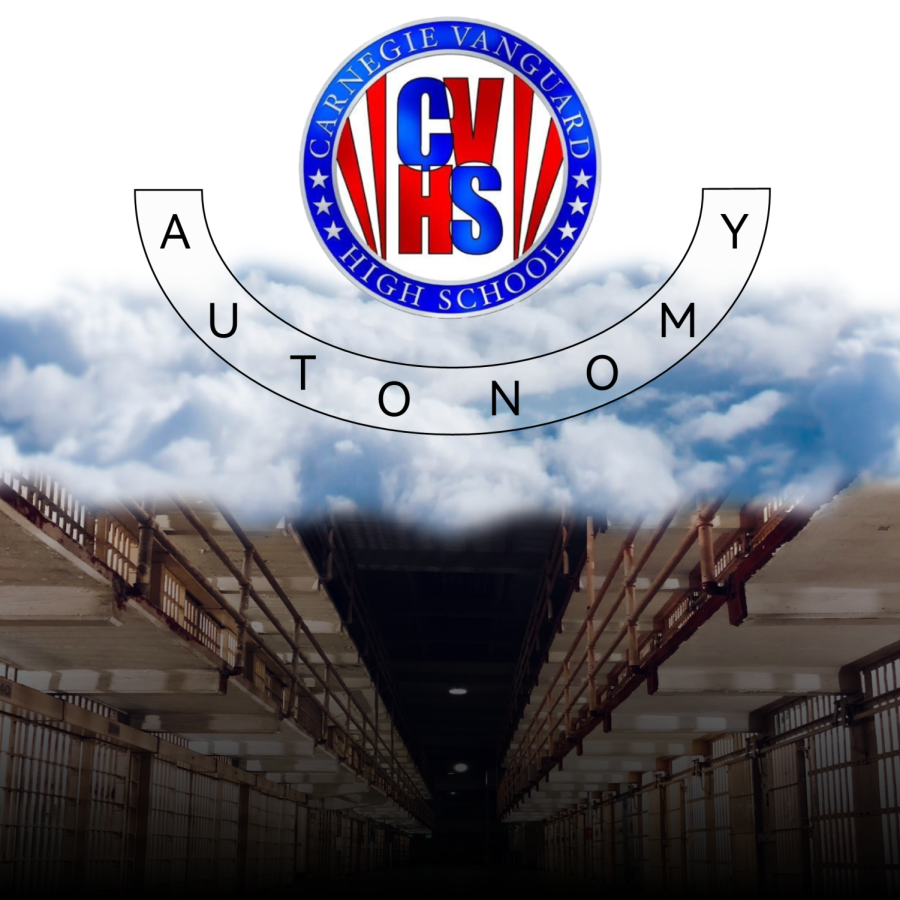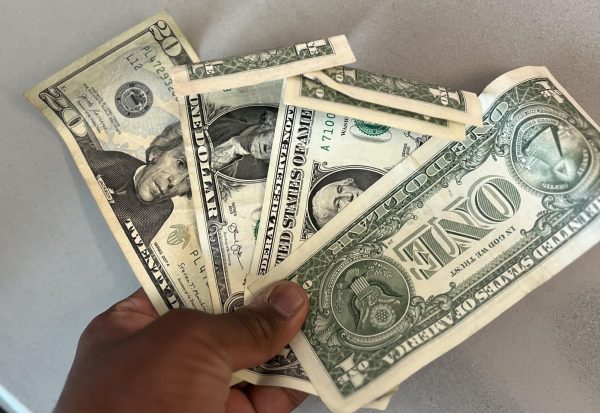Editorial: Preserving CVHS students’ autonomy
CVHS’s policy of student autonomy is a far better one than that of other schools.
A sea of red, white and blue clad students floods into the halls of the school. The true nightmare scenario. Blank, solemn faces in rigid polos, with only empty eyes staring back. Except not at CVHS, that is.
Luckily, we are granted an extremely lenient dress code, despite the prevalence of other high schools doing the opposite. A dress code would simply distract from learning, as students would have to worry constantly about their skirt length or hair, rather than what’s important: grades. Or was it student life?
Either way, despite the high stress of the school, the autonomy it gives its students—the 80-minute lunch and free dress—is a major selling point for many students who want to come to CVHS.
The current school policy of giving students a high degree of independence is a good one that should remain in place, preparing students for life and beyond.
It’s no debate that the uptick of school violence has made safety a priority at schools, including CVHS. With some schools implementing stricter school policies, like clear backpacks, CVHS has also gotten stricter with its ID system.
Now, students can expect ID checks when entering the building, random checks from teachers throughout the day and even checks in the lunch line. Students that forget their IDs are required to get a temporary ID for the day, with the accumulation of three temporary IDs leading to lunch detention.
Despite this imperfect system drawing much ire from CVHS students complaining about the new enforcement policy, the ID system still strikes a good balance between autonomy and administrative concerns, much better than some possible solutions.
By picking an ID system over a uniform, the school helps students be creative in their daily life. Put simply, uniforms limit the creativity of students. Despite being an academics-focused school, CVHS has been known to still have a creative side, sometimes being dubbed the school of “HSPVA-rejects,” with a fine arts program known for pulling off creative, controversial productions. Walking through the hallways, one can immediately see the thought and effort that some people put into what they wear.
The diversity of the student population means that, no matter what, people have a unique way of expressing themselves through untraditional clothing. The ID system and dress code set some ground rules, but the current system allows students to do whatever else they want to do—unlike the oppressive requirements of a uniform that kills off the vast landscape of the countless permutations of combinations, replacing it with a single, one-size fits all option.
Evidently “one-size fits all” simply isn’t the school culture at CVHS. Ever since day one, teachers have advocated to learn and ask questions your way—to advocate for your learning. In many ways, clothing is much the same. The school policies help to affirm this idea echoed by people in this school, fostering an understanding of independence for learning and beyond.
As clothing is a way for students to express their culture and creativity through, a uniform would suppress any sort of creativity. Uniforms are rooted in oppression and control, and impact students who don’t conform to a white/cisgendered norm. Carnegie happens to be a diverse school, with a vast population of queer students, and students from all cultures (see IFest).
A study done by the Government Accountability Office (GAO) found that uniforms are disproportionately stricter on students of color, female students, and queer students, as well as students with naturally larger bodies. Uniforms and dress codes usually have requirements on how long skirts can be, what kind of hairstyle you can wear or what clothes you’re allowed to wear in general, which can make students feel sexualized and unsafe.
If you went to a public middle school in Houston, you most likely wore a uniform or had a similarly strict dress code. Students were forced to change, had a skirt measured and had a teacher make a comment about what they were wearing. It hurts the student, and it’s humiliating. There’s a horrible feeling of distrust with having to constantly check what they’re wearing so they won’t get in trouble for it.
There is still an implication of inequity and otherness with these school policies. A stricter dress code, all in all, would suppress any creativity or expression of culture, ultimately making a worse experience for students. It’s just not a good option for our school, no matter how lenient. It all ties back to a system of bringing down others for a certain societal norm, restricting bodily autonomy.
Furthermore, the autonomy that the school gives students allows them a chance to feel what the real world would be like. Although structure and planning are good in their own right, it’s really up to students to take charge, instead of the school structuring time where certain things must be done.
The 80-minute lunch and 90-minute Wednesday advocacy periods are good times for students to actively work independently. Unlike a regular class period that allows you to work independently but only on a certain subject matter, these times are truly up to the students to decide what to do. Students balance the workload and are able to determine what is most pressing—perhaps a certain subject matter, extracurricular activity or even just goofing off with a friend.
Even though some schools forgo these extended periods in favor of longer class time, the autonomy CVHS gives its students with lunch and advocacy truly help students prepare for the real world by not forcing anything and letting students take control of their learning. Not every job in the workforce has a clearly defined schedule detailing what can be done when, and CVHS’s policy for student-defined time actually reflects that reality.
But in the wake of more incidents of school violence, safety is the most cited reason for enforcing stricter school policies. Curtailing student autonomy seems like it would provide a quick way to identify students, increase academic focus and decrease cases of violence, but these stances don’t make sense.
The lack of uniformity between accepted uniforms—different colored jackets, shirts and polos—still makes it somewhat challenging to quickly differentiate students, so it’s senseless to try to remove this policy. Historically, CVHS hasn’t had that many cases of violence or cases that need disciplinary action intervention, and as an academically-acclaimed school, it’s safe to say that the school is already focused on learning—to change these policies would only negatively affect the school.
Although the appeal of these policies makes it easy to implement—a single sweeping change to make school control easier—its benefits are hard to see while drawbacks shine through at a place like CVHS.
The solution for these issues is simple: keep CVHS and the high degree of autonomy afforded to students the way that it still is. A stricter dress code only serves to disadvantage students, putting a barrier between them and their learning. Such policies would only chip away at the independence CVHS students have developed while also creating unnecessary paperwork.
Just like how the long lunch and advocacy periods allow students to advocate for themselves, the current dress code policies allow students to express themselves. Harsher policies needlessly challenge the school culture of autonomy, a culture that helps prepare students for the real world.
A dress code is there to help students’ learning—to provide a better learning environment for all students. The autonomy and independence the school provides its students with are a way to promote successful learning, even if it doesn’t seem immediately obvious. It’s a good, prudent policy that should continue to be upheld.
We aren’t all the one and the same, and we need to ensure that our dress code and school policies continue to reflect that, even years into the future.
Your donation will support the student journalists of Carnegie Vanguard High School. Your contribution will allow us to cover our annual website hosting costs and fund field trips, competition fees, and equipment. We appreciate your support!

Jerry Fan is a senior at CVHS in his third year of involvement in scholastic journalism. Passionate about public transportation and education alike, he...

Ava is a sophomore at Carnegie Vanguard High School. They are a part-time theatre nerd who is always wearing their dead grandpa's sweater. Lover of Batman,...






